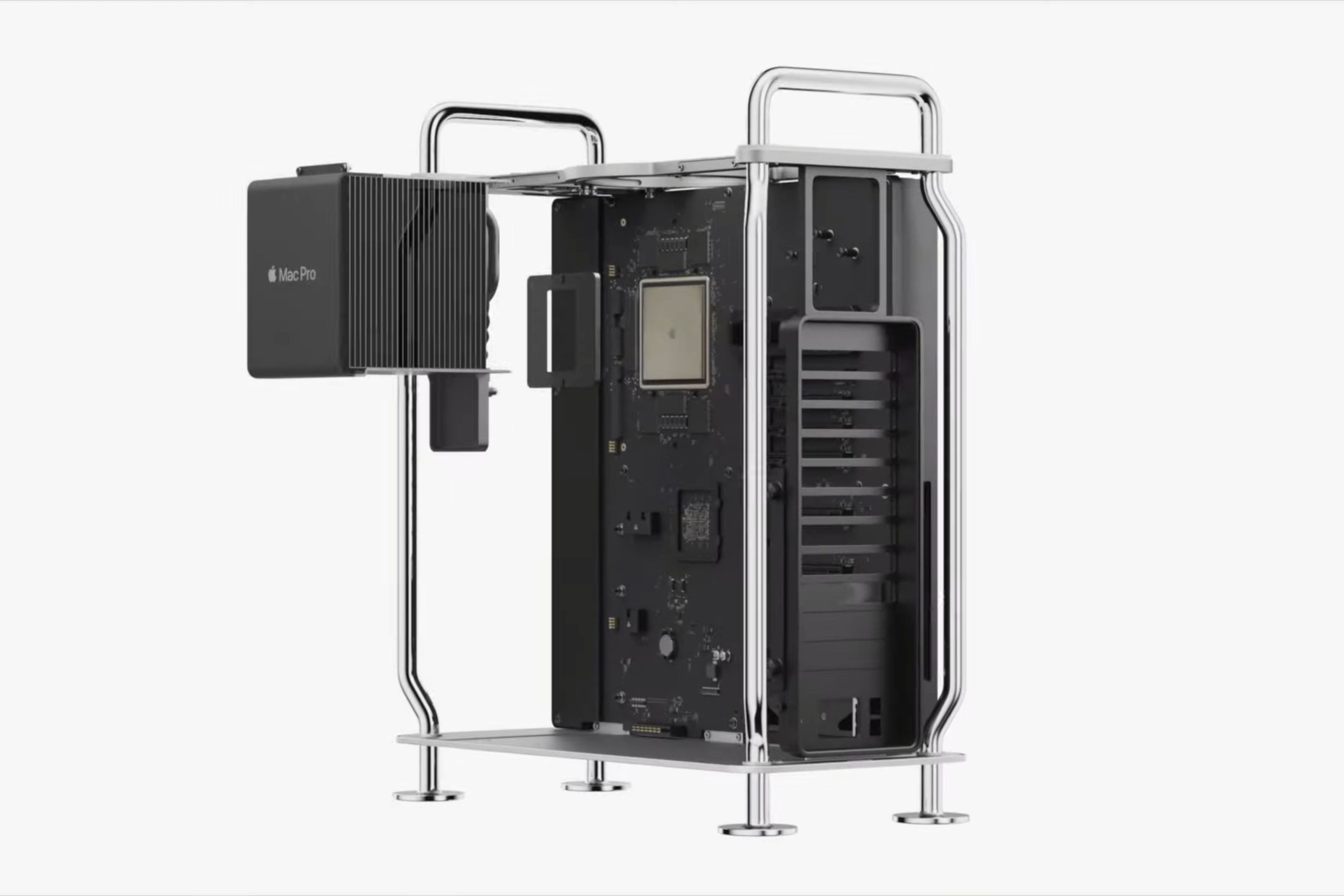Apple today announced the new Mac Pro, which features an M2 Ultra system-on-a-chip and six PCIe slots, at its annual Worldwide Developers Conference. The revealing of the Mac Pro completes the transition of the company's entire Mac lineup to Apple Silicon, a process that began when Apple first unveiled the M1 chip at WWDC in 2020. Though the Mac Pro has the same system-on-a-chip as the Mac Studio, its connectivity and expandability options dwarf the other professional-grade Mac. The latest Mac Pro starts at $6,999, which is the same starting price as the last Intel Mac Pro. It is available for pre-order starting today, with worldwide availability beginning June 13.
Similar to that model, the M2 Mac Pro can be configured in a tower or rack-mounted design. With six PCI expansion slots, it becomes the first Apple Silicon Mac to feature some level of expandability and the potential for upgrades after purchase. All the slots support PCIe Gen 4, which is the latest version of the PCI standard. Plus, the Mac Pro also features eight Thunderbolt 4 ports, which can be used to connect to six Pro Displays XDR at once.
Based on Apple's press release, it seems like the Mac Pro's PCIe slots will be used for I/O expansion, such as cards for digital signal processing (DSP) or serial digital interface (SDI). Apple also says that the PCIe slots can be used to add additional storage and networking, which makes the Mac Pro the first and only Apple Silicon computer to offer expandable storage. It's not immediately clear whether Apple will sell their own PCIe expansion cards or if users will need to buy third-party solutions.
Like the latest version of the Mac Studio, the Apple Silicon Mac Pro is powered by the M2 Ultra system-on-a-chip. It's essentially two M2 Max chips put together, and offers impressive performance. Every version of the new Mac Pro features a 24-core CPU and a 72-core GPU. It also bests the prior Intel Mac Pro in terms of memory and storage, shipping with up to 192GB of memory with 800GB/s unified memory bandwidth speeds. Since memory on Apple Silicon chips are shared between the CPU and GPU, the new Mac Pro will need more unified memory than its Intel predecessors, which had separate VRAM.
The other benefit of the new Mac Pro is through connectivity, which starts with the eight Thunderbolt 4 ports onboard. Two of those ports are located at the top of the Mac Pro's case, near the power button. The remaining six Thunderbolt 4 ports are found on the rear of the Mac Pro, along with the rest of the I/O ports and expansion cards. The Mac Pro also has three USB-A ports, two high-bandwidth HDMI ports, and a headphone jack that supports high-impedence headphones. On the inside, the M2 Ultra Mac Pro also packs WiFi 6E and Bluetooth 5.3.
The latest Mac Pro also includes the power and feature set of Afterburner cards, which were once add-ons to the Mac Pro, built-in. Apple says that the new Mac Pro has the performance of seven Afterburner cards built-in, which allows users to play 22 streams of 8K Pro Res video at the same time.
The tower version of the Mac Pro starts at $6,999 and $6,599 for education, while the rack-mounted version starts at $7,499 and $6,999 for education. It can be pre-ordered starting today, with worldwide availability starting June 13.

